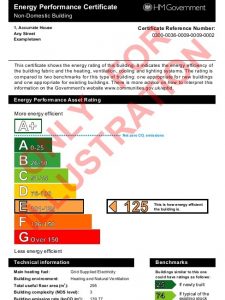By Stanley Rayfield
The Department for Communities and Local Government (DCLG), will soon make the data collected from millions of Energy Performance Certificates (EPCs) available to the public.
 What is in the data?
What is in the data?
A considerable amount of data is used in the creation of an EPC. This includes the size of every zone (often each room) as well as the type of activity that the zone is used for. Dimensions and thermal characteristics of roofs, ceilings,walls, floors, windows and doors together with their construction form part of the data.
Each boiler, heater, hot water system, air conditioning unit, light fitting, ventilation fan is included together with their respective technical detail.
Data for newly constructed buildings comprises of the exact design specification.
What are the advantages?
DCLG are making this information public to help achieve the Government’s climate change targets – CO2 from buildings is thought to account for around 40% of the UK’s total carbon emissions. Data contained within EPCs may help environmental researchers, local authorities and those investigating quality and compliance issues with an understanding of the current state of energy efficiency within nation’s buildings.
Will exposing our data be detrimental to us?
Whilst the system for producing EPCs is strict and comprehensive, it is well known that many EPCs are inaccurate. This was confirmed recently by the Department of Energy and Climate change (DECC) during their mystery shopping exercise. This uncovered the scale of inaccurate certificates due to poor practices and shoddy professional standards. In some cases, fraud had been discovered in relation to achieving better ratings.
For building owners who have used their EPC to gain compliance with Building Regulations, BREEAM or Government incentive schemes such as Energy Company Obligation (ECO), The Feed in tariff (FIT), The Renewable Heat incentive (RHI) or the Green Deal, this could allow third parties to expose non-compliance where it exists.
Can we opt out?
The Government understands that some building owners may not wish to have details of their building made publicly available and has made provision for organisations to opt out from allowing their data to be shared.
You may opt-out of having data made publically available by visiting the opt-out page at Landmark
Where can we find the data after its release?
Data will be released at open data communities


